Fluorescent lateral flow immunochromatographic strip (FLIS) combines the specificity of immunoassays with the high fluorescent intensity of labels, facilitating the sensitive and quantitative detection of trace analytes. In this article, we focus on various fluorescent labels as applied in current FLIS, such as quantum dots, lanthanide labels and discuss the application of these fluorescent labels.
1. Quantum Dot
1.1 Technical Principles
Quantum dots (QDs) are semiconductor nanocrystals with unique optical and electronic properties due to their quantum confinement effects [1]. They exhibit size-tunable fluorescence, where their emission wavelength can be adjusted by changing the size of the quantum dots.
1.2 Advantages of Quantum Dot
QDs can emit light across a wide spectrum, making them versatile for multiplexing assays. They are resistant to photobleaching, allowing for long-term imaging and detection. QDs offer high signal-to-noise ratios, improving assay sensitivity.
1.3 Technical Applications
Quantum dots have been applied in the development of immunochromatographic strips for detecting porcine reproductive and respiratory syndrome virus (PRRSV) antibodies, as reported in the study by Rui Yang et al. The quantum dot fluorescent microspheres (QDFM) were used as tracers, providing a rapid, sensitive, and specific method for detecting PRRS antibodies within 10 minutes. In the context of PRRSV, the QDFM immunochromatographic strip demonstrated high sensitivity and specificity, with a minimum detection limit comparable to ELISA kits [1].
By integrating the film-type CdSe@ZnS-COOH quantum dots into lateral flow immunoassay strips, the assay directly and simultaneously detects SARS-CoV-2, H1N1, and HAdV within 15 minutes, with low detection limits (8 pg/mL, 488 copies/mL, and 471 copies/mL), short assay time (15 min), good reproducibility, and high accuracy [2].
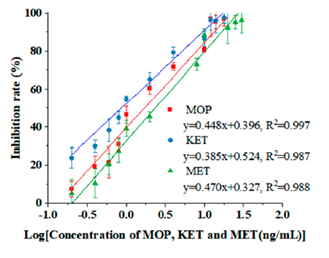
Fig. 1 (b) Sensitivity curve of the triple-test strip[3]
2. Lanthanide Labels
2.1 Technical Principles
Lanthanide labels, such as Europium nanoparticles, are based on the luminescence properties of lanthanide elements. They exhibit long-lasting fluorescence, which is ideal for time-resolved fluorescence measurements.
2.2 Advantages of Lanthanide Labels
Lanthanide labels have long-lasting emission, reducing interference from short-lived background signals. Also, they exhibit a large stokes shift, which means a significant difference between excitation and emission wavelengths, simplifying signal detection. If the lanthanide label is used in time-resolved measurement, the time-resolved measurement will minimize the impact of autofluorescence and reduce the background interference [3].
2.3 Technical Applications
Time-resolved fluorescence (TRF) technology was used to develop an MPO/Lp-PLA2 dual test strip for the detection of cardiovascular disease [4]. This test is highly sensitive and specific, allowing for rapid diagnosis (15 min) of MPO and Lp-PLA2 simultaneously, without the need for any large-scale instrumentation. This rapid dual detection system has promising potential for the diagnosis and prognosis of cardiovascular disease.
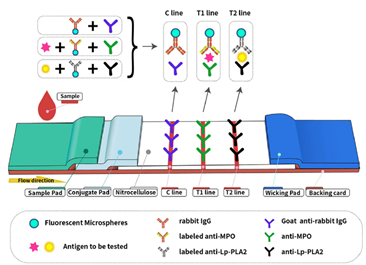
Fig. 2 Schematic diagram of dual detection test strips[4]
3. Conclusions
The advancement in fluorescent lateral flow immunochromatographic strip technology has opened new avenues for rapid, sensitive, and specific detection of various analytes. Quantum dots and lanthanide labels each offer distinct advantages, pushing the boundaries of diagnostic capabilities. As these technologies continue to evolve, they hold great promise for applications in healthcare, environmental monitoring, and beyond, providing valuable tools for early detection and improved management of various conditions and hazards.
4. Wondfo products
Wondfo's new fluorescence platform products utilize lanthanide chelates as labeling agents. This material significantly increases the Stokes shift between excitation and emission wavelengths, leading to a stronger fluorescence signal and heightened sensitivity. Furthermore, the broad excitation spectrum and narrow emission spectrum concentrate the energy, effectively mitigating environmental interference and enhancing specificity. Additionally, the extended fluorescence lifetime of lanthanide chelates contributes to greater stability.
Compared to quantum dot microsphere labels, lanthanide chelates boast a fluorescence lifetime that is 1-2 orders of magnitude higher. This wider temporal window for capturing and observing the signal results in amplified fluorescence intensity.
In addition, Wondfo's new products include a model equipped with an integrated temperature control module. This feature allows for optimal performance even in extreme high-temperature environments.
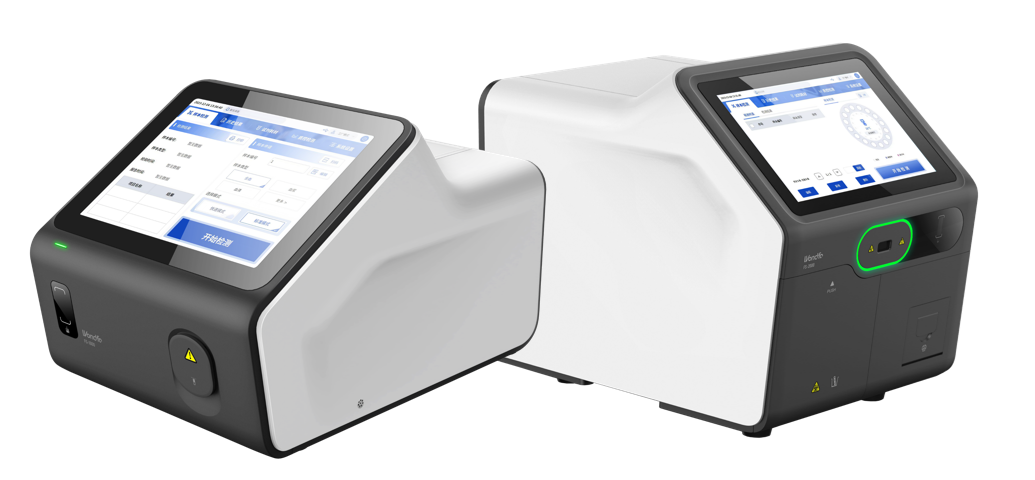
Finecare™ X Series
Reference
[1] Yang, Rui, et al. "Quantum dot fluorescent microsphere-based immunochromatographic strip for detecting PRRSV antibodies." Applied Microbiology and Biotechnology 108.1 (2024): 283.
[2] Wang, Wenqi, et al. "Introduction of graphene oxide-supported multilayer-quantum dots nanofilm into multiplex lateral flow immunoassay: A rapid and ultrasensitive point-of-care testing technique for multiple respiratory viruses." Nano Research 16.2 (2023): 3063-3073.
[3] Xu, Shujuan, et al. "Europium nanoparticles-based fluorescence immunochromatographic detection of three abused drugs in hair." Toxics 11.5 (2023): 417.
[4] Zhang, Shuang-Zhe, et al. "Development of a time-resolved fluorescent immunochromatographic assay for the quantitative detection of cardiovascular disease by MPO and Lp-PLA2." Int J Clin Exp Med 17.3 (2024): 32-40.
[5] Máčala, Jakub, et al. "Upconversion Nanoparticle-Based Dot-Blot Immunoassay for Quantitative Biomarker Detection." Analytical Chemistry (2024).
[6] Salonen, Selma M., et al. "Highly Sensitive Immunoassay for Long Forms of Cardiac Troponin T Using Upconversion Luminescence." Clinical Chemistry (2024): hvae075.
[7] Zou, Rubing, et al. "Up-converting nanoparticle-based immunochromatographic strip for multi-residue detection of three organophosphorus pesticides in food." Frontiers in Chemistry 7 (2019): 18.
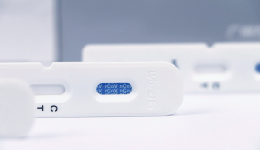 The first developed technology platform with various application scenarios, including infectious disease, fertility, DOA, etc.
The first developed technology platform with various application scenarios, including infectious disease, fertility, DOA, etc.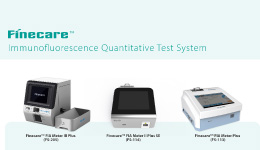 50+ kinds of reagents and five high-performance devices, focusing on detecting cardiovascular disease, inflammation, kidney injury, sex hormones, thyroid function, diabetes, tumor, and others.
50+ kinds of reagents and five high-performance devices, focusing on detecting cardiovascular disease, inflammation, kidney injury, sex hormones, thyroid function, diabetes, tumor, and others. Single-dose Chemiluminescense Immunoassay Platform
Single-dose Chemiluminescense Immunoassay Platform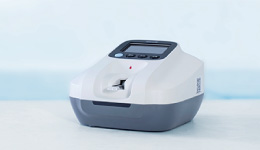 Wondfo optical blood coagulation analyzer is the first one in the world that can test PT, APTT, TT, FIB, and ACT simultaneously.
Wondfo optical blood coagulation analyzer is the first one in the world that can test PT, APTT, TT, FIB, and ACT simultaneously.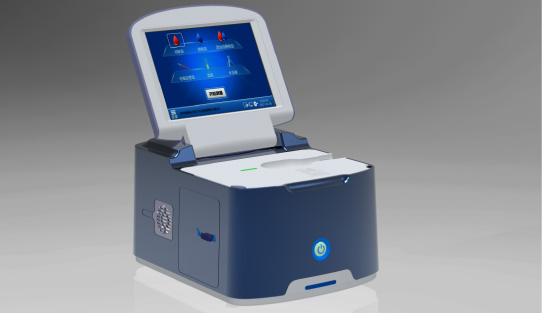 Our Blood Gas Analyzer BGA-102 can produce the result in 30s. Its advantages of portability, easy operation, durability, and high performance make it ideal for clinics, laboratories, and hospitals.
Our Blood Gas Analyzer BGA-102 can produce the result in 30s. Its advantages of portability, easy operation, durability, and high performance make it ideal for clinics, laboratories, and hospitals. Ready-to-use lyophilized RT-PCR Reagent;
Ready-to-use lyophilized RT-PCR Reagent;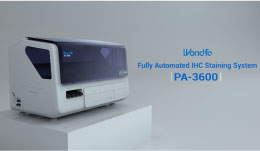 Wondfo PA-3600 IHC Staining System
Wondfo PA-3600 IHC Staining System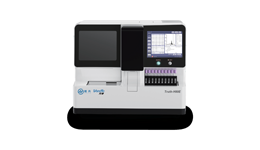 The Wondfo Truth-H80E HPLC Hemoglobin Analyzer is a high-performance diagnostic device designed for rapid and precise measurement of glycosylated hemoglobin (HbA1c)—the gold standard for diabetes diagnosis.It support the standard mode and variant mode and provide the result within 60-90seconds.
The Wondfo Truth-H80E HPLC Hemoglobin Analyzer is a high-performance diagnostic device designed for rapid and precise measurement of glycosylated hemoglobin (HbA1c)—the gold standard for diabetes diagnosis.It support the standard mode and variant mode and provide the result within 60-90seconds. This year, the summit will place a special focus on collaboration across different fields to explore the application of POCT and optimize clinical pathways. In the meantime, drive innovation by adoption of new technologies and biomarkers.
This year, the summit will place a special focus on collaboration across different fields to explore the application of POCT and optimize clinical pathways. In the meantime, drive innovation by adoption of new technologies and biomarkers.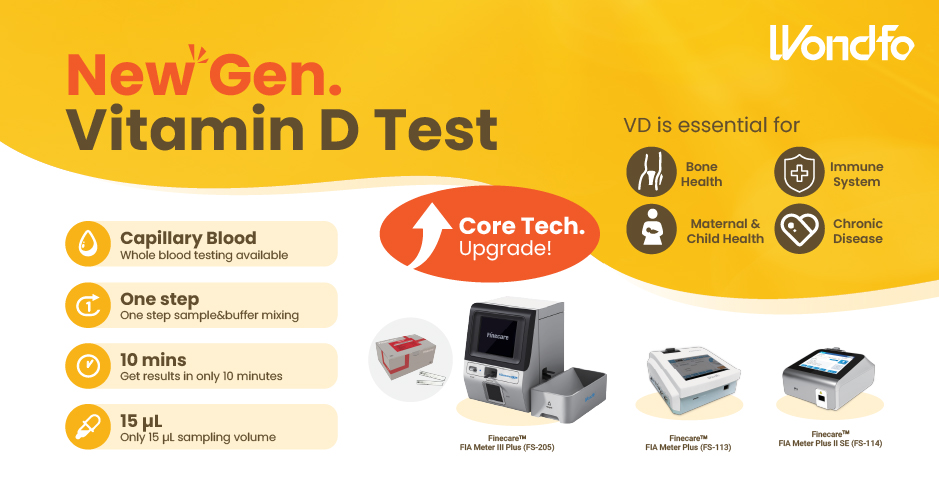 Finecare™ Vitamin D, from complexity to simplicity
Finecare™ Vitamin D, from complexity to simplicity Building A World Free from Antibitoic Overuse
Building A World Free from Antibitoic Overuse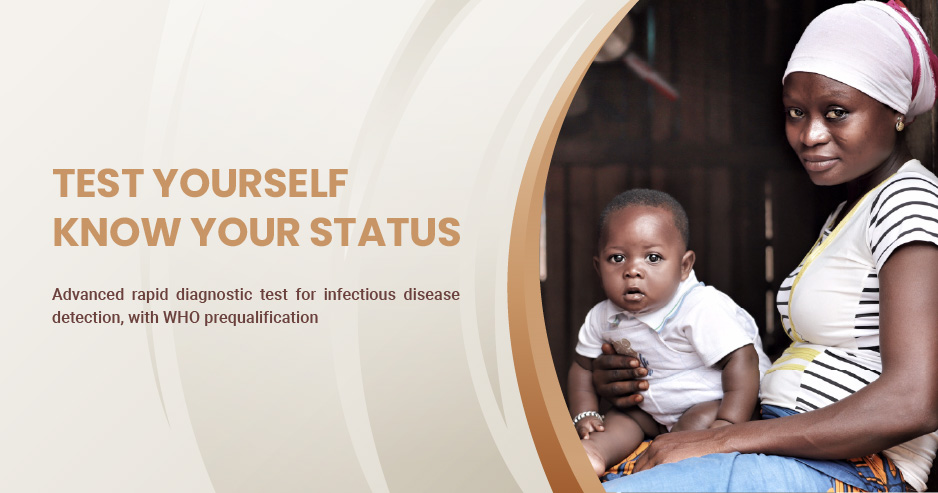 Advanced rapid diagnostic test with WHO prequalification for infectious disease
Advanced rapid diagnostic test with WHO prequalification for infectious disease The Future Intelligent Medical Assistant to Healthcare
The Future Intelligent Medical Assistant to Healthcare Fight against the pandemic through continuous innovation
Fight against the pandemic through continuous innovation






































